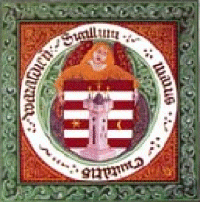ABOUT THE CONFERENCE
The Faculty of Organization and Informatics (FOI) has been organizing its international conference since 1989, with an exception of 1991, when the war prevented it from taking place. Today’s Conference began as a symposium, first held between 19th and 23rd December 1989, under the title Information Systems in Office Operations. The participants presented 40 papers in the field of design and development of information and intelligence systems, and information society training. Over the years subsequent changes in the name of the symposium followed the shifts in the Faculty’s orientation and the trends in the development of information and communication technology. A significant point in that respect was 1998, when the symposium grew into a conference named Information and Intelligent Systems (IIS). The Conference was to continue to be held under that name for a decade. In 2008, in order to reflect the regional importance of the conference in the field of information science, it was renamed as the Central European Conference on Information and Intelligent Systems (CECIIS), which is the name it currently carries.
The aim of the Conference is to promote the interface of researchers involved in the development and application of methods and techniques in the field of information and intelligent systems. The scientific program includes invited lectures by eminent international experts, contributed papers, as well as events such as poster presentation, workshops, roundtable discussions, hardware and software presentations and book exhibitions. The official language of the Conference is English.
The Conference provides its participants with the opportunity to present their papers to conference audiences. Even more importantly, authors can publish their original research papers in the Conference Proceedings. Since 2000, a selection of papers, previously extended, each of which is reviewed by two international reviewers, have been published in The Journal of Information and Organizational Sciences (JIOS), a scientific journal published twice a year (as a double volume).
Every participant can write a paper in the area of their main interest. There are seven basic topics that participants can choose from, in accordance with which eights sections in which the papers are presented are formed. These are as follows:
Data and Knowledge Bases
Education for Information Society
Information and Communication Technologies
Information Systems Security
Intelligent Information Systems
Intelligent Transport Systems and Autonomous Vehicles, and
Software Engineering, which are presented in respective sections.
Every year, there is a different special Conference theme that aims to reflect the global trends in the field. The 2013 Conference will thus invite participants to examine the many facets of ‘User-Centric Services’.
Since the Conference brings together authors from different parts of Croatia and abroad, it also has an important role in promoting the city and the region. The organizers therefore do their best to acquaint the participants with the opportunities to enjoy the cultural and historical heritage of Varazdin and the surrounding area during their stay, especially through additional social events, the most attractive of which are the excursion and a gala dinner party.
ABOUT VARAZDIN
Varazdin is the oldest and one of the most beautiful Central European cities. It lies in the north of Croatia, close to the borders with Hungary, Austria and Slovenia. Owing to its charm and baroque architecture Varazdin has been historically dubbed ‘Liitle Vienna’. The city, whose rich history goes back to the 12th century, was home to the region’s wealthiest nobles, landowners, artisans and artists, especially in the late 1700s, when the city flourished and became the capital of Croatia.
Nowadays Varazdin is the administrative, political, economic and cultural center of North Croatia with a population of around 50,000. Within and outside Croatia’s borders, Varazdin is well known for its culture and tourist attractions. Renowned for the City Castle, the 500-year old City Hall – one of the oldest in Europe, and its cemetery, the city also features a historic Town Guard ‘Purgari’. Among the sights and venues one should not miss are the Music School, which fosters young classical talent, the theatre, the cathedral, churches whose monasteries and convents treasure artefacts, manuscripts and legends, 51 monumental heritage structures, palaces and villas. Visitors to Varazdin can take a stroll down its many promenades and parks. In 2005, the Historic Nucleus with the Old Town (the Castle) was submitted to the UNESCO’s World Heritage List. According to Lonely Planet Varazdin holds the first place on the list of recommended sites worth visiting in Croatia, and it is a holder of the ‘Superbrands Destination’ title. Furthermore, in 2010 Forbes declared Varazdin as the best place to live and work in Croatia. Among its many awards is that of the most tastefully arranged and best maintained destination in continental Croatia, the title it has received nine times.
The building currently housing the Faculty was built in the second half of the 17 th century (started in 1665). A former Jesuit and later Pauline monastery, it forms the most valuable early baroque architecture complex in the city of Varazdin, along with the adjoining church and the gymnasium and seminary in their vicinity.
Varazdin is also well known for its events. The city is at its best in late summer, during the Spancirfest, the street festival that was named the best city event in Europe. Other attractive features in the city events calendar are the Grand Ball of Varazdin, Traditional Crafts Square, International Traditional Jazz Festival, Saturdays in Varazdin, Blues festival, Summer in Varazdin, Trash Film Festival and others. Of particular interest are the Varazdin Baroque Evenings, an international baroque music festival held at the same time as the CECIIS Conference.
The City Tourist Association has portrayed Varazdin as “a city which lives several different lives. It tells about glamour of the past, celebrates the beauty of countless aspects of art and bears witness to its own dynamic everyday life. It is the place of comfortable rest but also of vigorous experiences of life joys.”
You are welcome to find out more about Varazdin and its surroundings on the web pages of the Varazdin City Tourist Association and the Varazdin County Tourist Board.

This work is licensed under a Creative Commons Attribution 3.0 License.
Copyright (©) 2007 - 2015. Faculty of Organization and Informatics. All Rights Reserved.












